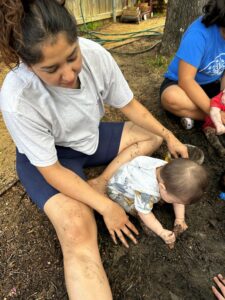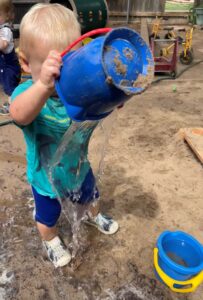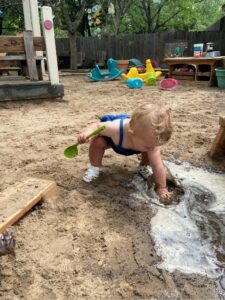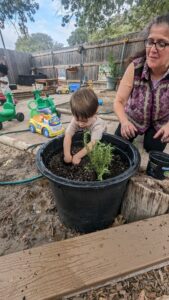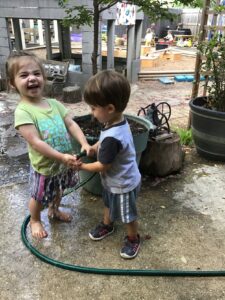University Presbyterian Children’s Center
Little Explorers’ Yard
Annually, University Presbyterian Children’s Center seeks input from the families about the classrooms and program through an Annual Feedback Form with open-ended questions.
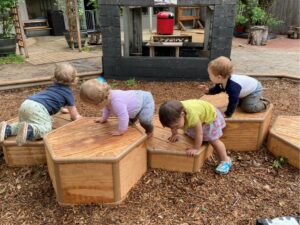
In the spring of 2023 in response to the question on “what do you like best about the program,” several families referenced the outdoor classrooms as evident in this sample of a few of the comments:
•“Nature involved and outdoor play setting”
•“The sense of community, the teachers and staff and the nature based curriculum”
•“Nature involved as recommended by our pediatrician because of the nature-based education and outdoor play”
•“The outdoor space….it’s a magical place!”
With the hottest summer and early fall on record in San Antonio with 74 days over 100 degrees with high humidity and little relief in the morning hours, the infant and toddler educators explored numerous ways of keeping the children cool during their assigned time outside each day. Coupled with the annual International Mud Day Celebration in June, the spring through early fall provided perfect and necessary days for a wide variety of sensory play opportunities with water, wet sand, and mud along with the daily watering of the plants and even friends! Additionally, throughout the year, the educator in charge of planning for and implementing learning activities on the Little Explorers’ Yard focuses on ways to provide a wide variety of sensory and movement activities to promote the sensori-motor development of the infants and toddlers.

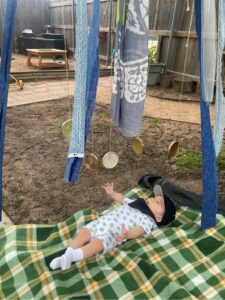
![]()
